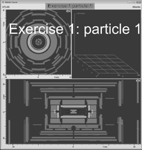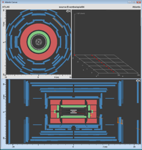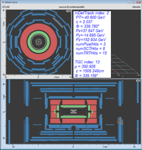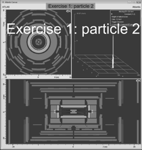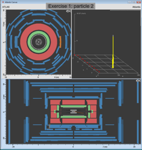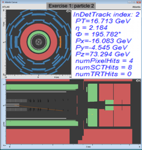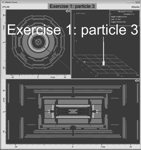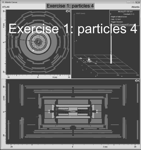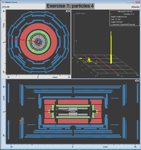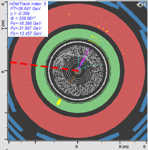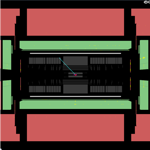Alternative 1 (Electron) is correct. Alternative 2 (Positron) ist wrong. The decision whether it is an electron or a positron is to be done by looking at the sign of the PT value. The sign of the PT value of the particle with the red coloured track and only entries in the electromagnetic calorimeter in this event is negative. That's why it is an electric negatively charged lepton, that is stoped inside the electromagnetic calorimeter and from there an electron.
Alternatives 3 and 4 (muon resp. anti-muon) are not true because there isn't a 'visible' particle, that was created from proton-proton-collisions and made it to the muon chambers.
Alternative 6 (neutrino) is correct, because a neutrino was emitted in addition to the electron. The neutrino carries a fraction of momentum and leaves the detector undetected. That is why it can only be seen with the help of an energy imbalance measurement. This shows a missing transverse momentum (MET) in direction of the leaving neutrino. As its value of 42 GeV is big enough one can really trace the MET back to neutrino creation.
Alternative 7 (Jets) is wrong because no bundle of particles can be seen.
